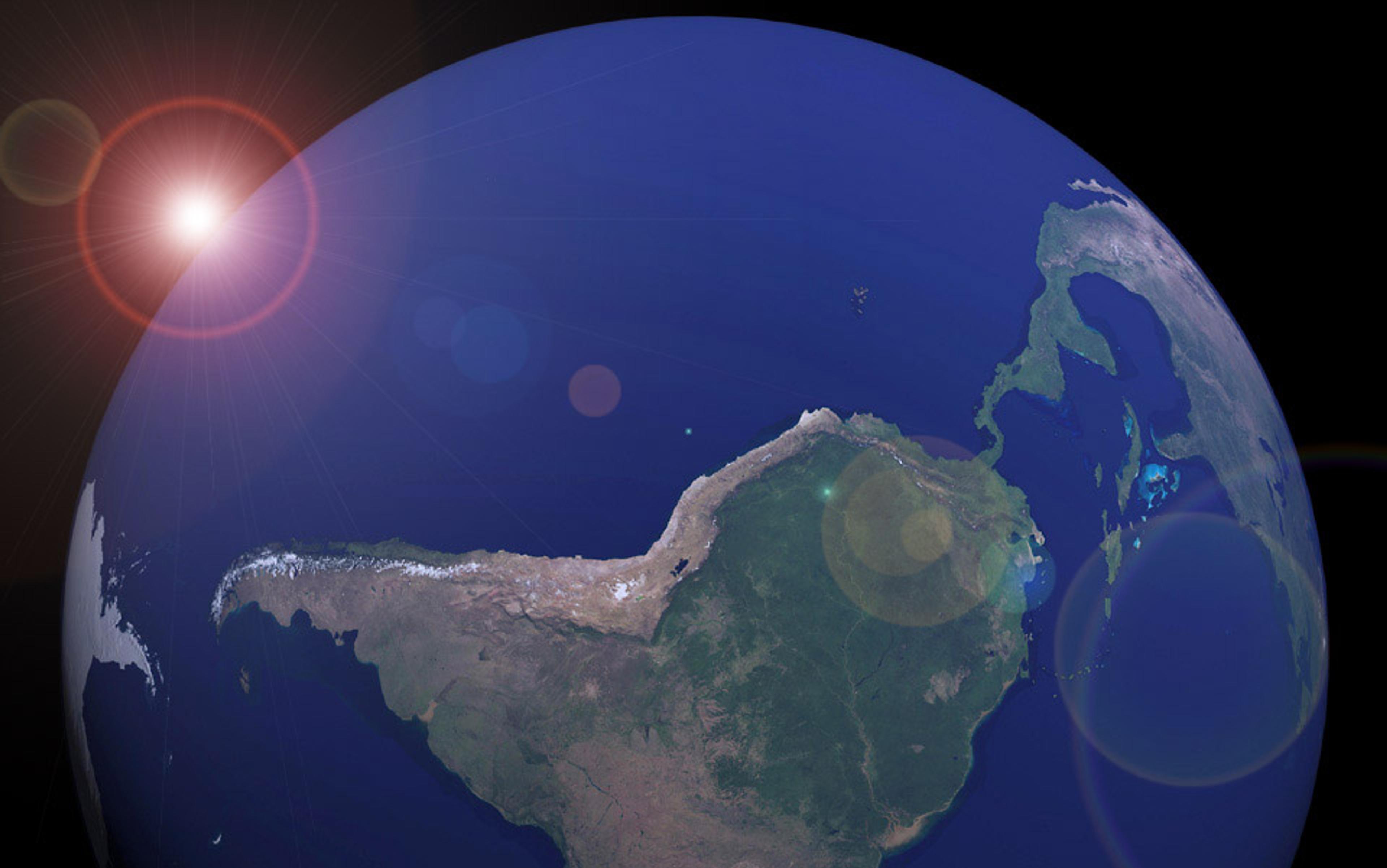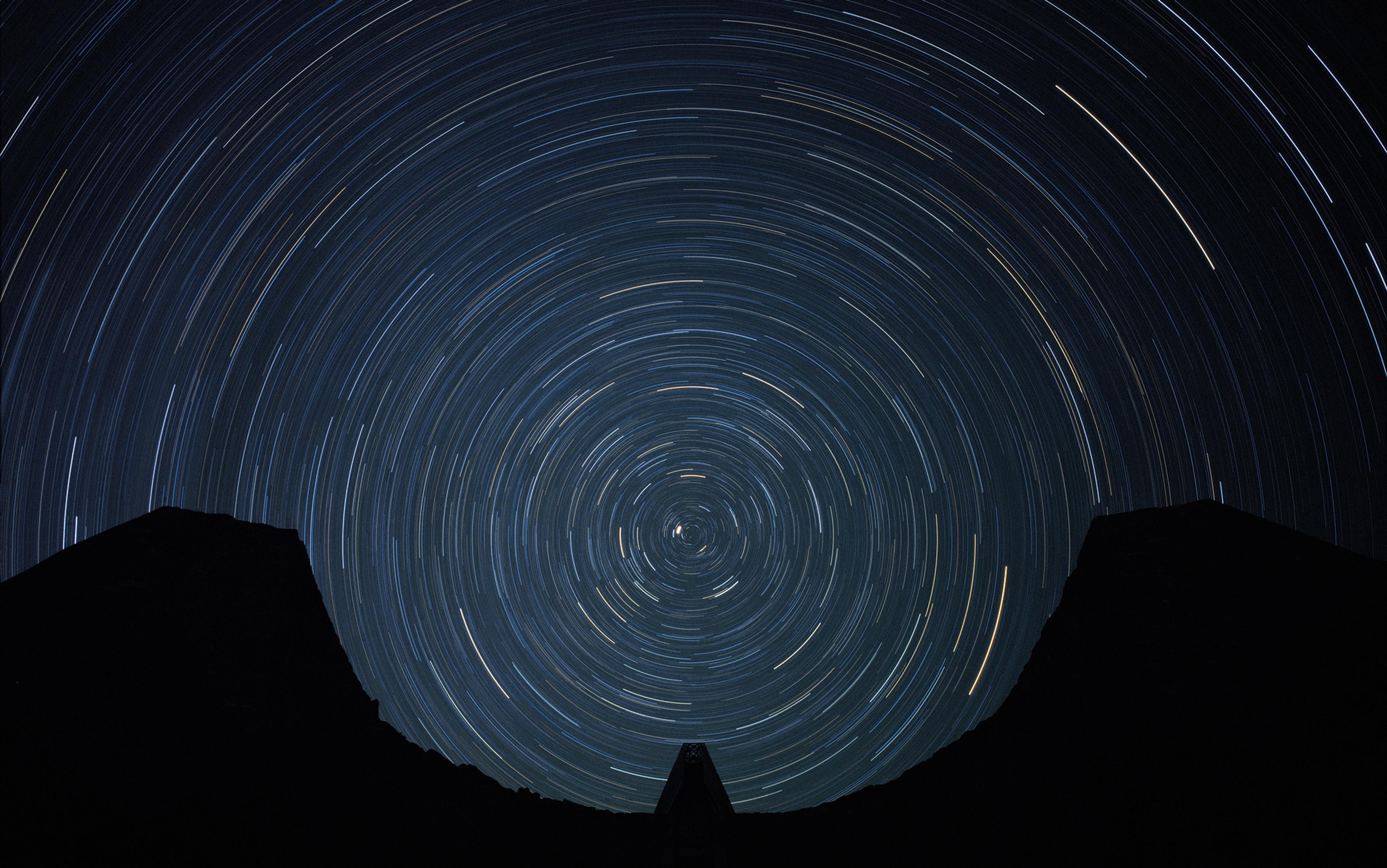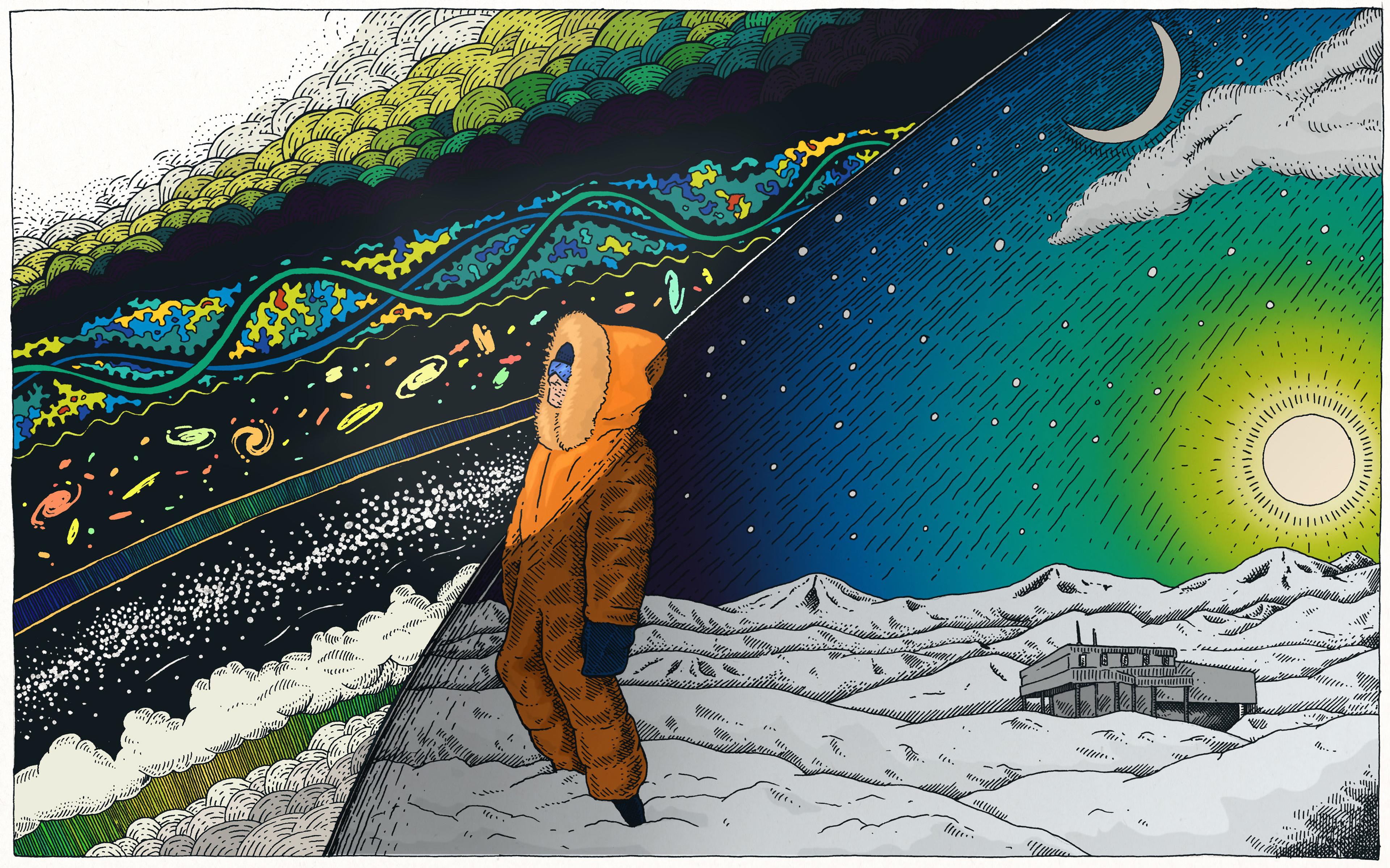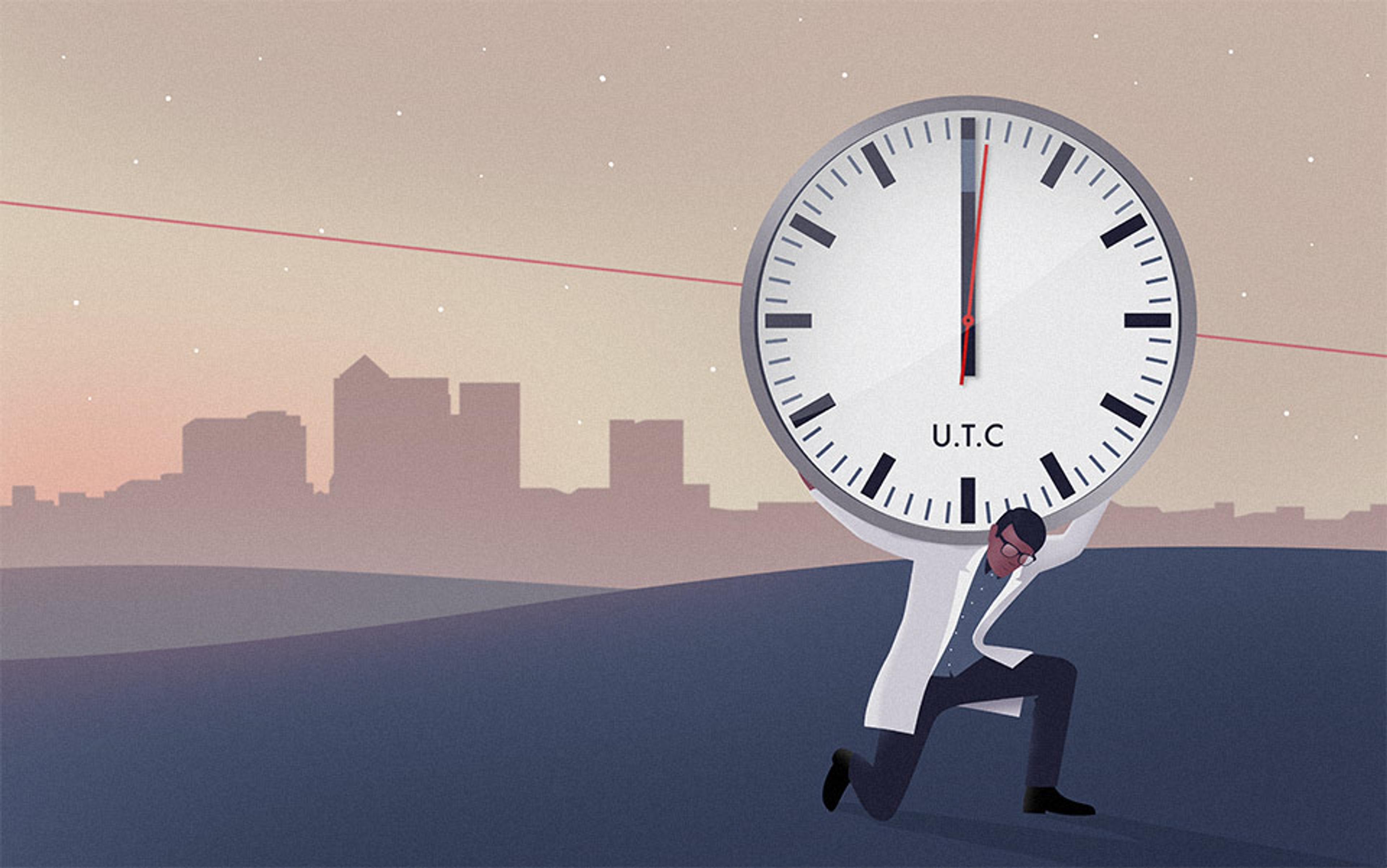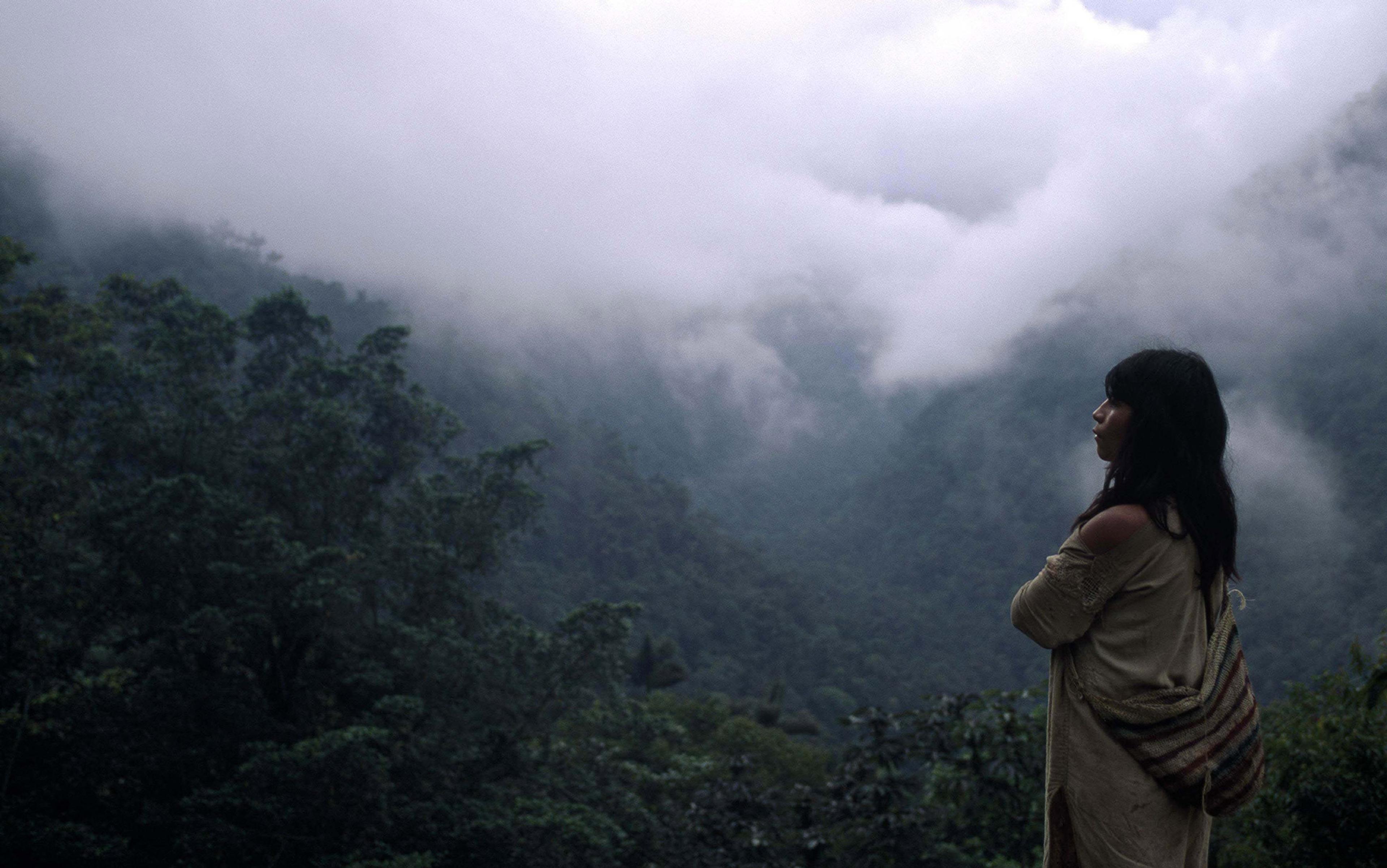Though he never actually crossed it, the Greek mathematician Pythagoras is sometimes credited with having first conceived of the Equator, calculating its location on the Earth’s sphere more than four centuries before the birth of Christ. Aristotle, who never stepped over it either and knew nothing about the landscape surrounding it, pictured the equatorial region as a land so hot that no one could survive there: the ‘Torrid Zone’. For the Greeks, the inhabited world to the north — what they called the oikumene — existed opposite an uncharted region called the antipodes. The two areas were cut off from one another by the Equator, an imaginary line often depicted as a ring of fire populated by mythical creatures.
First created in the 7th century, the Christian orbis terrarum (circle of the Earth) maps, known for visual reasons as ‘T-and-O’ maps, included only the northern hemisphere. The T represented the Mediterranean ocean, which divided the Earth’s three continents — Asia, Africa, and Europe — each of which was populated by the descendants of one of Noah’s three sons. Jerusalem usually appeared at the centre, on the Earth’s navel (ombilicum mundi), while Paradise (the Garden of Eden) was drawn to the east in Asia and situated at the top portion of the map. The O was the Ocean surrounding the three continents; beyond that was another ring of fire.
For the Catholic Church, the Equator marked the border of civilisation, beyond which no humans (at least, no followers of Christ) could exist. In The Divine Institutes (written between 303 and 311CE), the theologian Lactantius ridiculed the notion that there could be inhabitants in the antipodes ‘whose footsteps are higher than their heads’. Other authors scoffed at the idea of a place where the rain must fall up. In 748, Pope Zachary declared the idea that people could exist in the antipodes, on the ‘other side’ of the Christian world, heretical.
This medieval argument was still rumbling on when Columbus first sailed southwest from Spain to the ‘Indies’ in 1492. Columbus, who had seen sub-Saharans in Portuguese ports in west Africa, disagreed with the Church: he claimed that the Torrid Zone was ‘not uninhabitable’. Although he never actually crossed the Equator, he did go beyond the borders of European maps when he inadvertently sailed to the Americas. To navigate, Columbus used, among others, the Imago Mundi (1410), a work of cosmography written by the 15th-century French theologian Pierre d’Ailly, which included one of the few T-and-O maps with north situated at the top. Columbus’s eventual ‘discovery’ of America stretched the horizons of the European mind. The Equator was gradually reimagined: no longer the extreme limit of humanity, a geographical hell on Earth, it became simply the middle of the Earth.
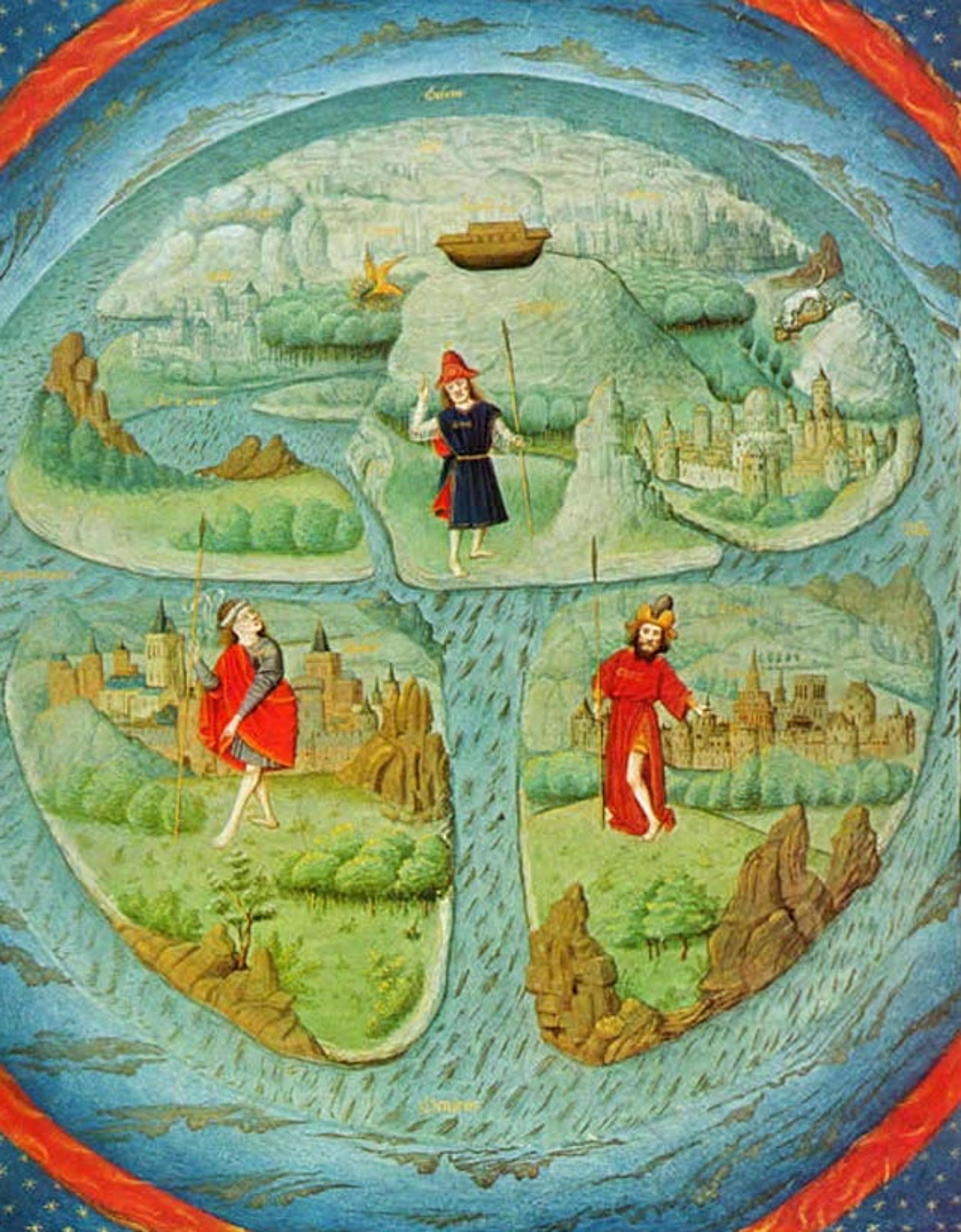
An orbis terrarum (circle of the Earth) map, also known as a ‘T-and-O’ map
The Equator cuts across the Molucca and Halmahera seas, the Karimata and Makassar straits, Lake Victoria and the Gulf of Tomini, and 14 countries in Africa, southeast Asia and the Americas. Of all these nations, only one named itself after the line: Ecuador. Not surprisingly, Ecuador’s tourist industry makes a big deal of the association. The Galapagos Islands might be the country’s number-one attraction, but few visitors leave without first walking the line in Ciudad Mitad del Mundo, situated high in the Andes mountains about 20 miles north of the capital, Quito.
Tourists watch amazed as water swirls down through a plughole in different directions depending on which side of the Equator the sink is placed
The Intiñan Museum in Ciudad Mitad del Mundo is designed to educate tourists about the wonders of Ecuador. It boasts a scale model of the Galapagos Islands, installed in a fountain, and several displays about the indigenous peoples of the Amazon, including a series of paintings that illustrate how to shrink a head. However, none of these explain why busloads of tourists flock to the place. In fact, they come to witness firsthand the ‘unique forces at play’ on the Equator, which is indicated by a red line that cuts through the middle of the museum. Tourists jump gleefully from one side to another, attempt to stand an egg on the head of a nail (they receive a certificate if they succeed), and watch amazed as water swirls down through a plughole in different directions depending on which side of the Equator the sink is placed. Although it is usually defined as an ‘imaginary’ line, the Equator is indeed marked by the occurrence of unusual phenomena — though not very precisely marked, and not by the sorts of phenomena advertised at the Intiñan. The painted stripe that wends through the museum misses the actual Equator by several metres.
What ‘unique forces’ are at play, then? The velocity of the Earth’s rotation varies depending on where you stand: 1,000 mph at the Equator versus almost zero at the poles. That means that the fastest sunrises and sunsets on the planet occur on the Equator, and centrifugal and inertial forces are also much greater there. Together, they produce what is known as the Coriolis effect, which largely determines the direction of weather systems, ocean currents, the east-west path of hurricanes, and the fact that tornados spin in opposite directions on each side of the Equator (it is not enough, however, to alter the equilibrium of eggs on a nail or the spiral of a gallon of water in a sink). Centrifugal and inertial forces affect the relative motion of all objects that lift off sufficiently far from the Earth, from cannonballs to missiles. Spacecraft are launched from sites close to the Equator, such as the Space Centre in French Guiana: they are already moving faster than objects elsewhere on the Earth, and the extra velocity reduces the amount of fuel needed to enter space.
Because of these same centrifugal forces, the Earth’s diameter at the Equator is approximately 27 miles (43 km) greater than from pole to pole. Instead of a sphere, our planet is shaped like an M&M (or, as New Scientist claimed in 2011, like a lumpy potato). The extra distance from the Earth’s core means that gravity is weaker at the Equator: about 0.6 per cent weaker than at the poles. And the equatorial bulge means that the Earth’s highest point, when measured by the distance from its core (rather than sea level), is not the peak of Mount Everest but that of Mount Chimborazo in Ecuador.
The countries along the Equator are dotted with monuments that mark its location, including a large rock placed near a river in the Democratic Republic of Congo by Henry Morton Stanley, the Welsh-American explorer famous for supposedly uttering the insipid phrase ‘Dr Livingstone, I presume’. But the world’s largest structure commemorating this imaginary line, a 100ft-high monolith with a five-ton globe resting on top, is in Ecuador, a mere 500ft from the Intiñan Museum. Built in 1979, the monument gave rise to a tiny, imitation Spanish colonial town. No one actually lives there: it closes at sundown and is full of gift shops, mostly selling miniature replicas of the monument.
Although it is marked by a long yellow line and has the latitude 0º 0’ 0’ embossed on its side, Ecuador’s Equator monument is dedicated less to the Equator itself than to a team of French scientists who came here in the 18th century to carry out geodesic observations. Two scientific teams set out from France in the 1730s, one heading to Lapland near the North Pole and the other to the Viceroyalty of Peru, to measure the length of one degree of latitude. Being able to compare the length of a single degree of latitude at the Equator to one at the poles would help to determine the exact size of the Earth, create more accurate maps and, more importantly, would finally settle an ongoing debate. French scientists of the time were convinced that the Earth swelled at the poles, while English scientists, including Sir Isaac Newton, believed that it was the Equator that bulged.
The team’s surgeon was killed by an enraged mob in Cuenca during a running-of-the-bulls celebration, and the draftsman got sick and died
The French Geodesic Mission was the first major scientific incursion into South America. The Viceroyalty of Peru was selected because there the Equator was close to a city (Quito), and was situated between two major mountain ranges running north to south, thus offering a perfect panorama in which to carry out geodesic calculations. The team consisted of ten renowned French scientists, led by an astronomer, a mathematician and a geographer. In order to gain permission to conduct their experiments in a Spanish colony, the French scientists had to bring two Spanish naval officers, notionally with specialisations in geography, though in fact they were spies. In 1736, the team arrived in Quito, where a local scientist and mapmaker made up the numbers. The party set up camp about 10 miles north of the city, in the Andes mountains.
Professional relations broke down almost from the start. The French scientists gave the Spaniards a cold shoulder. The team was poorly equipped for the altitude and weather conditions, and sickness spread quickly. Indians living in the mountains, afraid that the Europeans were dividing up the land among themselves, pulled up the stakes that the scientists were using as markers to calculate distances. Local officials accused the team of trying to steal Incan artifacts, almost running them out of town. The team’s surgeon was killed by an enraged mob in Cuenca during a running-of-the-bulls celebration, and the draftsman got sick and died. Five years before the Equatorial team could complete its work, the Polar expedition finished measuring one degree of latitude, conclusively proving that the Earth bulged at the Equator and receiving applause from the European scientific community.
The French Geodesic Mission on the Equator might not have contributed much to the advancement of science, but its presence, and the scientific methods and ideas that it brought to the Americas, were to have a profound influence. Along with the latest gadgets, the French brought the spirit of Enlightenment, a scientific worldview that would eventually lead to revolution in France and independence in the New World. For centuries, the land in which the scientists found themselves had been known as the República de Quito. After declaring independence from Spain in 1830, this newly created country chose a new name in large part inspired by its enlightened visitors, who had always referred to it as Tierra del Ecuador, the land of the Equator.
Before leaving the country, the French erected a pyramid-like monument to the mission on the site where they had first drawn the line of the Equator. They neglected to include the names of their two Spanish officers, prompting the Spanish Crown to order the destruction of the French fleur-de-lis on its peak. And then the monument was left to crumble over the years. In 1936, to mark the 200th anniversary of the Geodesic Mission’s arrival, a stone monument topped by a brass globe was erected in San Antonio de Pichincha. Almost 50 years later, this monument was moved to a nearby town, replaced by the 100ft stone version that stands today, flanked by busts of all the members (Spaniards included) of the French Geodesic Mission.
Both the giant monument and the museum dedicated to the Equator missed the actual line by a wide margin. Yet many pre-Hispanic constructions stand directly on it. European astronomers living far from the Equator might have calculated its location scientifically (though always with a significant margin of error), but long before that, those living in the region seem to have pinpointed the exact location without the need for scientific devices.
The Incas, based in southern Cuzco, came north to invade the equatorial region in the late 15th century and, once they had dominated the local indigenous cultures, they set to work in the mountains building a series of pucaráes, huge circular structures made from stones. Ecuadorian and international anthropologists believe that these constructions, the most important Incan remains within the equatorial region, were military fortifications. Not everyone, however, is convinced.
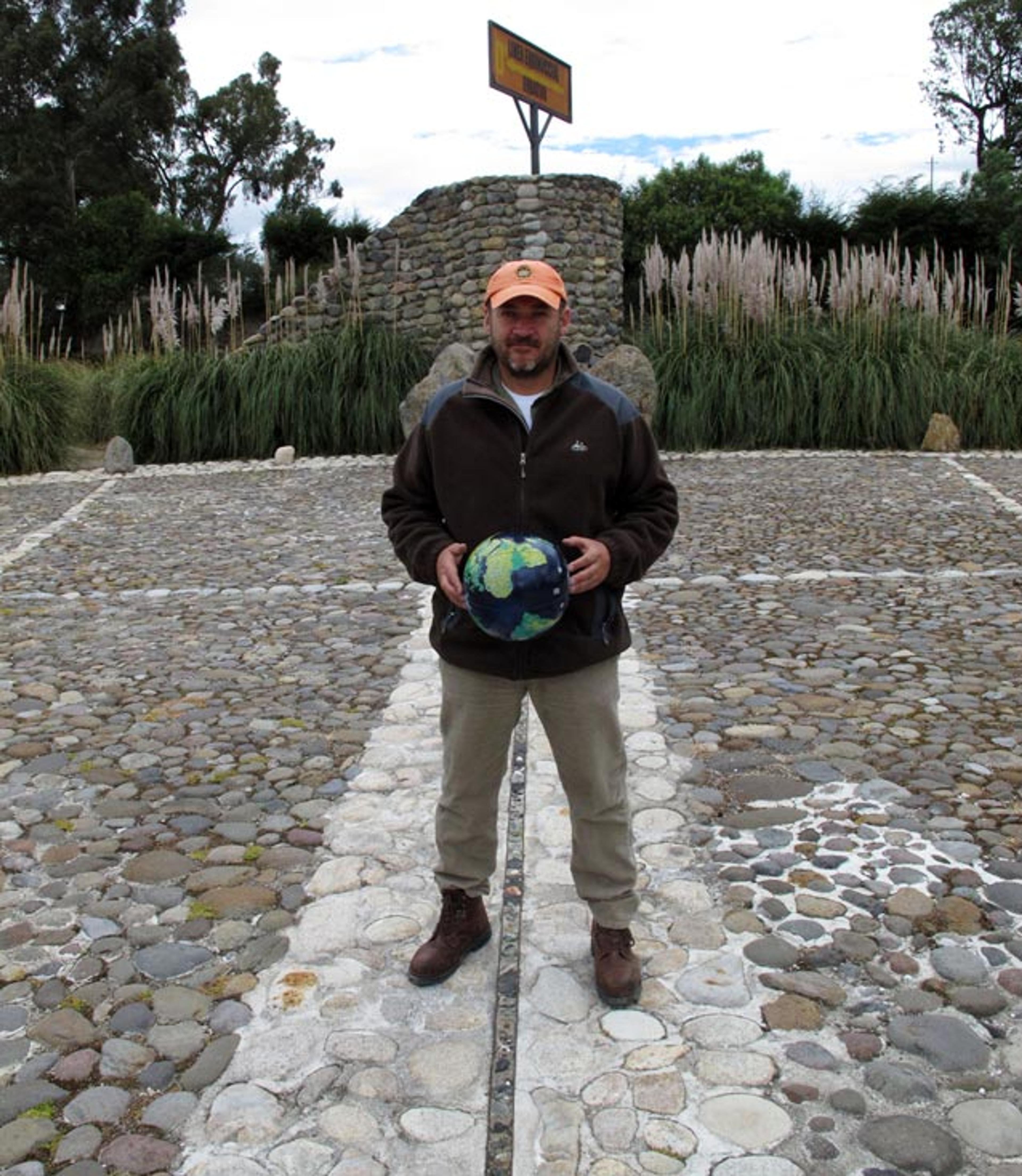
Cobo on the line of the Equator at the giant Quitsato sundial. Photo by Kurt Hollander
Cristóbal Cobo, a deep-voiced outdoorsman in his late 40s, used to make frequent visits from his native Quito to the mountain range 10 miles to the north to go hang-gliding. His solo flights gave him a bird’s-eye-view of the area, while his use of GPS technology, GoogleEarth and Stellarium helped him to track the line of the Equator throughout the region. After mapping out the known indigenous constructions in the area, he began to use AutoCAD and other sophisticated 3D computer-imaging programs to project lines from Catequilla, the site of a large circular structure, out into the surrounding hills. This led to the discovery of several more archaeological sites. According to a map that Cobo created, Catequilla is the centre of a series of 13 pre-Hispanic constructions, all aligned along the principal geographical and celestial lines and thus all in perfect geometrical relation to the Equator.
His maps led to a bloated sense of self for the northern countries, located at the top of the map, while diminishing the southern hemisphere’s sense of size and importance
A self-taught Ecuadorian astronomer, anthropologist and geographer, Cobo came to the conclusion that these circular constructions were not forts (they were too far from any urban centres to offer much protection), but evidence of a more celestial purpose. The Incas were aware of the existence of the Equator from the reports of travellers who had seen their shadows disappear during the equinoxes. More than just imperial warmongers, the Incas were also children of the Sun (their principal deity) and avid stargazers. According to Cobo, the several pucaráes located on the Equator, in line with the major celestial bodies, were most likely observatories from which to chart the stars and the movement of the Sun.
The Catequilla construction is a stone wall, 1.8 metres high, forming an arc approximately 70 metres in diameter. It stands on the only elevated plain located directly on the Equator, affording it an unobstructed 360-degree view. From this unique vantage point, the southern and northern constellations and all of the most important archeological sites in the region are visible with the naked eye. Cobo believes that the arc in Catequilla was constructed in line with the path of the Sun above the Equator: one end of the wall receives the sunrise during the winter solstice and the other end catches the sunset during the summer solstice.
As an outgrowth of these ideas, Cobo recently created the Quitsato Project, ‘a multidisciplinary study in archeology and astronomy designed to realise the correct interpretation of the meaning and function of the pre-Hispanic cultural contexts that exist in the equatorial Andes’. As part of his project, Cobo has created a giant sundial, the only man-made object on the Equator that can be seen from space. It is located exactly on the line, a short drive from Cobo’s home in the Hacienda de Guachalá (which happens to be where the French Geodesic Mission stayed in 1736). The sundial’s gnomon is a giant vertical tube. Patterns of white rock radiate away from the centre, serving as calendar, clock and compass. For just a few seconds twice a year, the sun, directly overhead at noon during the equinoxes, illuminates a mirror at the bottom of the giant tube.
Although Cobo uses the latest satellite tracking devices and sophisticated computer programs to chart his maps of indigenous astro-architecture, he is wary of the European scientific methods and worldviews that have accompanied colonialism in its spread across the globe. The French Geodesic Mission, armed with what was then the latest gadgets and theories, not only failed to calculate the location of the Equator accurately: its enlightened culture based on science eventually gave rise to ever more efficient systems for exploiting the New World.
In particular, Cobo has problems with the direction that mapmaking has taken. In 150AD, Ptolemy drew the first world map with north placed firmly at the top. This orientation has become the standard one for maps everywhere. The preeminence of north derives from the use of Polaris, also known as the North Star, as the guiding light for sailors. Yet Polaris, or any other star for that matter, is not a fixed point. Because of the Sun and Moon’s gravitational attraction, the Earth actually moves like a wobbling top. This wobble, known to astronomers as the precession of the Equator, represents a cyclical shift in the Earth’s axis of rotation. It makes the stars seem to migrate across the sky at the rate of about one degree every 72 years. This gradual shift means that Polaris will eventually cease to be viewed as the North Star, and sailors will have to orient themselves by other means.
According to Cobo, the best point that we can use to orient ourselves is the Sun rising in the east above the Equator. As he points out, the very word orientation comes from the Latin oriens, which means east, or sunrise, while ‘disorient’ means losing direction, losing one’s way or, literally, losing the east. In Western culture, north is used to determine all other directions, yet the origin of the word itself comes from the Proto-Indo-European prefix ner-, which means down or under, but also left, and was commonly used as ‘left when facing the rising Sun’. Thus, in order to determine north, one needs to know the direction east.
In 1569, the Flemish cartographer Gerardus Mercator, the first to mass-produce Earth and star globes, devised a system for projecting the round Earth onto a flat sheet of paper. His ‘new and augmented description of Earth corrected for the use of sailors’ made the Earth the same width at the Equator and the poles, thus distorting the size of the continents. Although Mercator created his projection (still used today in almost all world maps) for navigation purposes, his scheme led to a bloated sense of self for the northern countries, located at the top of the map, while diminishing the southern hemisphere’s sense of size and importance.
The positioning of the northern above the southern hemisphere, and the distortion of their true size on most maps, has divided the globe into simplistic binary oppositions: First versus Third World; civilised versus primitive; developed versus underdeveloped countries. In fact, it would make more sense to divide the world into Aristotle’s Temperate, Torrid and Frigid zones, for it is not the southern hemisphere that has the greatest concentration of poverty, but rather the equatorial region.
From the beginning, more than being purely representations of the physical world, maps have been projections of man’s sense of self-importance onto the space around him. They have often been influenced by imperial or religious interests, props to the privileged status of certain cultures. Cobo believes that many of the geopolitical, ideological and economic hierarchies that shape our vision of the world would ‘disappear’ if the globe were laid on its side and all maps were rotated 90 degrees counterclockwise, putting the east on top of the world and north with south spread out on either side of the Equator.
It is true that in space, directions don’t exist. On Earth, however, east is our most universal orientation. One loses sight of the southern celestial hemisphere when facing north, and it is only by gazing east that one can see both the northern and southern constellations simultaneously as the stars pass by overhead. As our planet hurtles through space, whipping around on its axis, the Sun and the stars, time and the future, approach us from the east. There is nowhere we can better appreciate the movement of the skies, better understand our place in the universe, than when we stand on the line that wraps around the middle of the Earth and watch the heavens streaming towards us.
Corrections, May 29, 2013: The essay previously stated that Medieval mapmakers did not know that the Earth is round. The sentence has been removed. It was also implied that wind comes from the East. This too has been altered.
